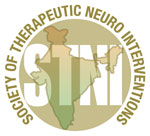Definition :
Atherosclerotic disease involving the intracranial arteries including those encased by cranial bones and dura, and those located in the subarachnoid space.
Extracranialatheromatous thromboembolismis one of the major causes of ischaemicstroke in the developed countries, whereas intracranial and small vessel disease is the case in the developing world. This difference is probably due to the atherogenic diet taken in developed countries.
Stroke In India : are we different from the World?
Few decades ago low average life expectancy for Indians than that ofAmerican, European and Japanese populations, which
excludes the population at highest risk for stroke, thereby
bringing down the prevalence rate. As Indian life expectancy is increasing , Incidence and Prevalence of stroke same as rest of world.
As in most parts of the world, ischemic strokespredominate over intracerebral hemorrhage in India.Among ischemic strokes, intracranial atherosclerosis is themajor atroke mechanism, although all other stroke
mechanisms also coantribute to stroke.As in most parts of the world, ischemic strokespredominate over intracerebral hemorrhage in India.Among ischemic strokes, intracranial atherosclerosis is themajor stroke mechanism, although all other strokemechanisms also contribute to stroke.
Intracranial large artery atherosclerotic disease is the commonest cause of stroke in patients in India, followed by lacunar, cardioembolic, and extracranial carotid disease, according to the findings presented by SubhashKaul (Nizam’s Institute of Medical Sciences, Hyderabad, India) at India’s National Stroke Symposium on Feb 2007 .
Hypertension, diabetes mellitus,tobacco use and, interestingly, low concentration ofhemoglobin were the most important risk factors forischemic stroke, for both sexes, and in the young as wellas the elderly.
Vascular Imaging and Diagnosis
Both transcranial Doppler ultrasound and magnetic resonance angiography noninvasively identify 50 to 99% intracranial large vessel stenoses with substantial negative predictive value [The Stroke Outcomes and Neuroimaging of Intracranial Atherosclerosis (SONIA) Trial]. TCD: PPV 36% ,NPV, 86% ; MRA: PPV 59% , NPV, 91% . Cerebral DSA is ‘Gold Standard’ and the confirmatory test to reliably identify stenosis.
Medical Management Recommendations
- Antiplatelets :For patients with recent stroke or TIA (within 30 days) attributable to severe stenosis (70%–99%)
of a major intracranial artery, the addition of clopidogrel 75 mg/d to aspirin for 90 days might
be reasonable (Class IIb; Level of Evidence B).
- Hypertension Management Recommendations :For patients with a stroke or TIA attributable to 50% to 99% stenosis of a major intracranial
artery, maintenance of systolic BP below 140 mm Hg and high-intensity statin therapy are
recommended (Class I; Level of Evidence B).
- DyslipedemiaRecommendation :Statin therapy with intensive lipid-lowering effects isrecommended to reduce risk of stroke events among patients with ischemic stroke orTIA presumed to be of atherosclerotic origin and aLDL-C level ≥100 mg/dL(Class I; Level of EvidenceB).
- Glucose Metabolism and DMRecommendations: After a TIA or ischemic stroke, all patients should be screened for DM with testing of fastingplasma glucose, HbA1c, or an oral glucose tolerancetest.
In general, HbA1c may be more accuratethan other screening tests in the immediate posteventperiod (Class IIa; Level of Evidence C).
- Obesity Recommendations : All patients with TIA or stroke should be screenedfor obesity with measurement of BMI (Class I; Levelof Evidence C).
- Cigarette Smoking Recommendations :strongly advise every
patient with stroke or TIA who has smoked in thepast year to quit (Class I; Level of Evidence C).
Present Status of Intracranial Angioplasty & Stentin
For patients with severe stenosis (70%–99%) of a major intracranial artery and activelyprogressing symptoms after institution of aspirin and clopidogrel therapy, the usefulnessof angioplasty alone or placement of a Wingspan stent or other stents is unknown and isconsidered investigational (Class IIb; Level of Evidence C).
Wingspan® StEnt System Post MArketSurVEillance Study (WEAVE™ Trial) were presented Jan 25, 2018 at the International Stroke Conference, providing compelling evidence that more patients suffering from intracranial atherosclerotic disease (ICAD) may benefit from endovascular treatment with the Wingspan Stent System.
The final results showed that following on-label indications resulted in extremely low periprocedural stroke and death rate (2.6%) with Wingspan for FDA approved indication. This was better than the FDA’s target of 4%. The trial data suggest that patients suffering from intracranial atherosclerotic disease may benefit from endovascular treatment with the Wingspan Stent System.
About the Wingspan Stent System and Gateway Balloon
The Wingspan Stent System is a self-expanding Nitinol stent and delivery system intended for use in the treatment of intracranial atherosclerotic disease. The Gateway PTA Balloon Catheter is an over-the-wire balloon catheter used to pre-dilate the lesion prior to insertion and deployment of the Wingspan Stent System. Stryker’s Wingspan Stent System with Gateway® Percutaneous Transluminal Angioplasty (PTA) Balloon Catheter was approved in the United States under a Humanitarian Device Exemption (HDE) and received CE Mark in 2005.
As on MAY 2018 Criteria for Intracranial Angioplasty & Stenting are :
- 70-99% stenosis intra-cranial atherosclerotic lesion
- more than seven days post stroke,
- 22 to 80 years old,
- modified Rankin Score (mRS) of three or less,
- difficult to manage medically and recurrent (two or more) strokes.

